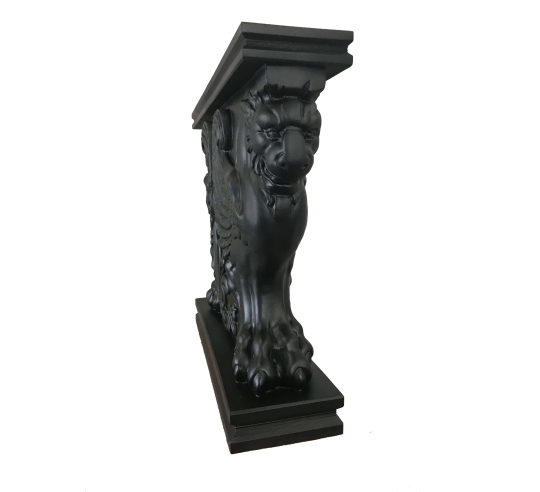- New
Table Base in the shape of a Winged Lion or Griffin.
The winged lion is a fantastic figure that has been used throughout history and by many civilizations. The winged lion represented the power and divine origin of the king.
The belief in these fantastic beings dates back to Ancient Egypt around 3300 BC. However, some specialists claim that these beliefs are older and there are many references to the winged lion in Babylonian, Assyrian and Persian cultures.
For many ancient cultures, the lion was regarded as the king of animals and the eagle as the king of the skies, the griffin, which was a kind of mixture of these two animals, was thus regarded as a particularly majestic and powerful creature.
Dimensions
Height: 73 cm
Length: 82 cm.
Depth: 18 cm
Weight: 60 Kg.
Material: Reconstituted marble
Editor: Temarte S.L.
Piece sold for unit (2 pieces are necessary to assemble a table), the glass is not included.
In Egyptian mythology, the sphinx is a fantastic male creature with a lion's body, a man's chest and sometimes wings. One of the most beautiful sphinxes is that of Giza attributed to King Khaf-Ra, depicted with the body of a lying lion.
In classical Greek mythology, the Sphinx was a demon that foretold misfortune, death and destruction. Its description is still that of a winged lion with a human chest but, unlike the Egyptians, it has a woman's chest and a snake tail. The sphinx used to lay on rocks and posed riddles to the unfortunate travellers. If they could not give the right answer then the sphynx strangled them with its tail. The name sphinx comes from the Greek word "sphingo" and means "strangler".
The Etruscans and formerly the Assyrians represented the gods and mythological beings by a winged lion. The Romans also used this figure as a decorative element, which was later taken up by Christianity in the Middle Ages (books illustrated by fantastic animals, to help preach the gospel).
In the Christian tradition, the winged lion was the symbol of royalty and divine justice. According to legend, the stairway to King Solomon's throne was flanked by twelve golden lions on either side.
The Lion of Saint Mark was the traditional symbol of Venice. Throughout history, the Lion of St. Mark has been represented very often through statues, coins, flags and insignia.
The representation of St. Mark in the form of a winged lion is one of the best known elements of Christian iconography. St. John the Baptist is depicted wearing a lion's skin and the gospel phrase of the voice he cries was associated with a roar made in the desert. The figure of the lion has also become a symbol of the power of the word of the evangelist, with its wings representing spiritual elevation, while the halo is a traditional symbol of Christianity, associated with holiness.





